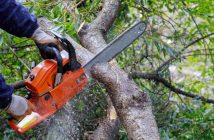Mold is a type of fungi that grows in the form of multicellular filaments called hyphae and are naturally occurring in outdoor environments. The fungi that exist as single cells are called yeasts. Some yeasts and molds cause disease or food spoilage, while others play an important role in biodegradation or in the production of various antibiotics, foods, enzymes and beverages.
Mold can be found growing on foods, plants and in almost every environment, and can be detected indoors and outdoors. Mold growth occurs primarily inside wall cavities and areas hidden from visual observation. In order for mold to grow, it must have a moisture source. The moisture sources may consist indoor plumbing leaks, condensation, humidifiers, steam from bathrooms, poor ventilation and roof leaks. A poorly ventilated building or home can contribute to elevated levels of humidity, thereby leading to condensation, which enables microbial growth.
Mold can appear looking like a stain, slightly fuzzy and in a variety of colors. A musty smell is often an indication of microbial growth even when there is no visible growth. If this is the case, then one recommended way to search for possible mold growth is to look for signs of water staining, warping around walls, under sink cabinets and on bathroom tiles/floors.
In order for molds to reproduce, they produce small spores. Some mold spores can be dispersed either by air or water. The airborne mold spores may remain airborne for extended periods of time, and may be found on furniture and clothing. Mold spores can survive in extreme pressures and temperatures, however few can begin to grow at temperatures of 39 degrees Fahrenheit or 4 degrees Celsius. Some species of molds may remain alive in a dormant state even though there may be no sign of growth. Also, certain mold species can survive in harsh environmental conditions, like snow covered soiled regions or dry conditions, which normally do not support mold growth.
There are over 100,000 known species of mold, with approximately 100 of these considered pathogenic to humans. The presence of molds such as Stachybotrys, and certain species of Aspergillus, Penicillium, and Chaetomium, is significant because of these molds’ ability to produce mycotoxins, which are fungal metabolites that may be toxic when consumed.
According a study in the Journal of Allergy and Clinical Immunology, five allergists, including Robert A. Wood, M.D., of the Johns Hopkins University School of Medicine, found in their review that just because a particular mold can produce toxins doesn’t mean it will. Even if the mold is producing toxins, a person must breathe in a sufficient dose to be affected. In addition they found it is highly unlikely that one could inhale enough mold in the home or office to receive a toxic dose.
There are some people who may be sensitive to the exposure of molds. According to research, symptoms that can be caused by exposure to molds include wheezing, stuffiness and eye irritation. According to the Center of Disease Control and Prevention (CDC), some people with serious allergies to molds may have more severe reactions. In addition, the CDC stated that severe reactions may occur amongst people who are exposed to large quantities of molds in occupational settings, like a rancher working around moldy hay.
Health effects from exposure will vary greatly from one individual to the next, depending upon a number of factors, particularly the sensitivity of the individual and pre-existing allergic, asthmatic or other health conditions.
The CDC recommends to consult with your family or general health care provider if have any concerns about being exposed to mold.
According to the CDC areas that have been found to have high levels of mold exposure are greenhouses, saunas, mills, flower shops, and farms. The CDC recommends those who are sensitive to mold should avoid areas, such as compost piles, cut grass, and wooded areas.
In order to decrease the rate of possible mold growth inside a home, one should decrease the humidity by ventilating the showers and cooking areas. Check all plumbing fixtures for leaks and have the roof inspected annually. Often there can be small and insidious areas one might overlook, which could be a potential source for mold growth.
Myth #1
Mold does not grow in dry climates.
According to the CDC, mold can grow almost anywhere a moisture source is present.
Myth #2
Mold causes rashes.
According the study in the Journal of Allergy and Clinical Immunology, five allergists, including Robert A. Wood, M.D., of the Johns Hopkins University School of Medicine, found in their reviews that exposure to molds doesn’t contribute to atopic dermatitis, or rashes.
Myth #3
Mold causes sinusitis.
According to the same study in the Journal of Allergy and Clinical Immunology, by five allergists, including Robert A. Wood, M.D., of the Johns Hopkins University School of Medicine, found in their reviews there was no clear-cut evidence that sensitivity to mold causes chronic sinusitis, nor are there conclusive data to show that mold-killing antifungal drugs such as amphotericin, applied to the nasal passages, are an effective treatment for sinusitis.
Coulter Bright is the president and owner of Bend Environmental, Inc, a local testing and consulting company specializing in environmental hazards.
541-749-8699, coulter@bendenvironemntal.com, www.bendenvironemntal.com
(Photo above | Cascade Business News)




